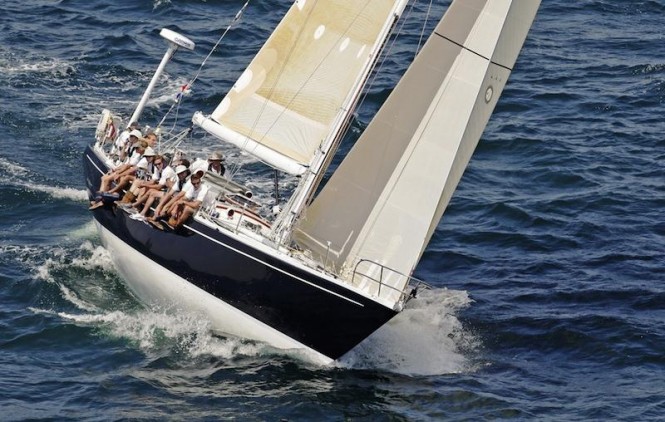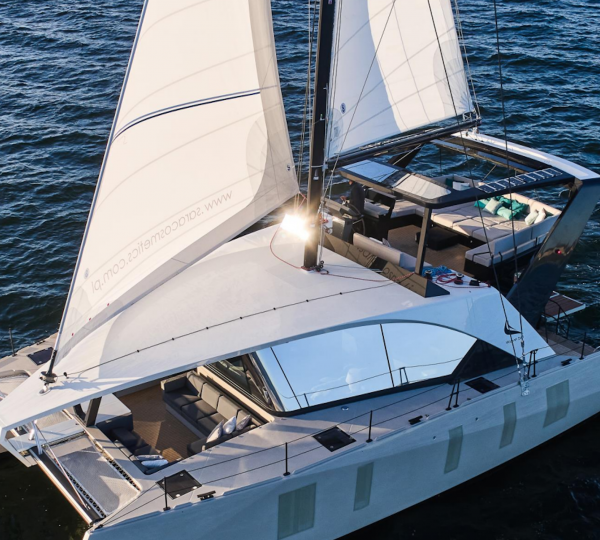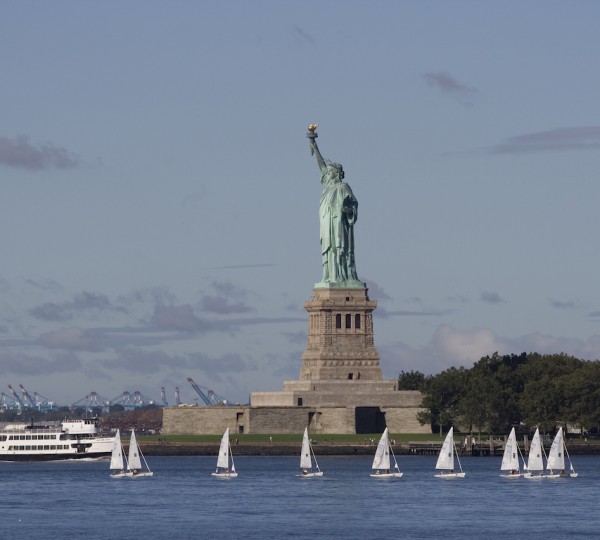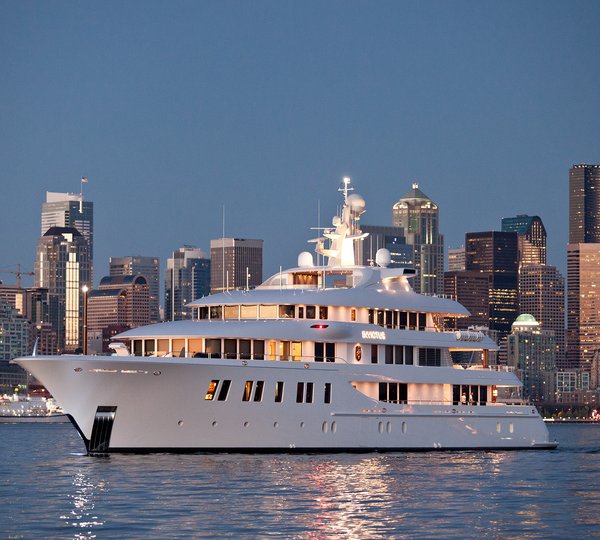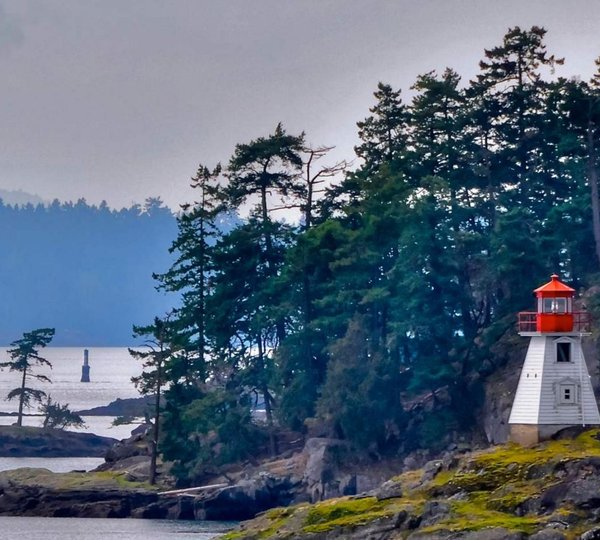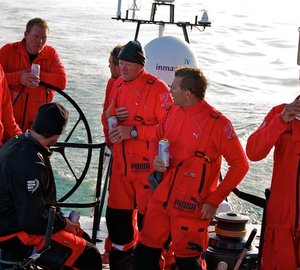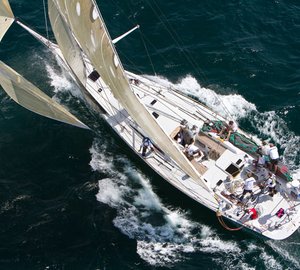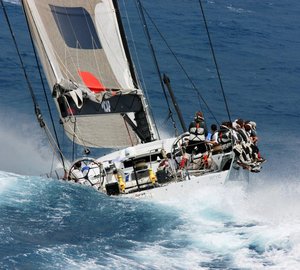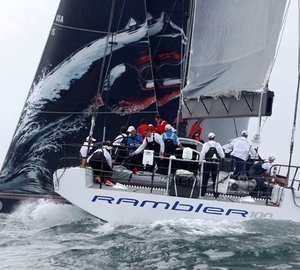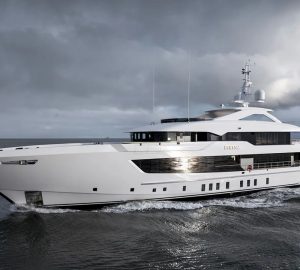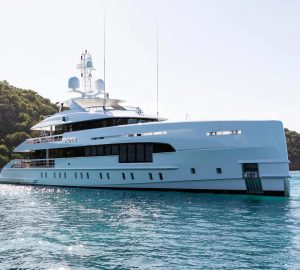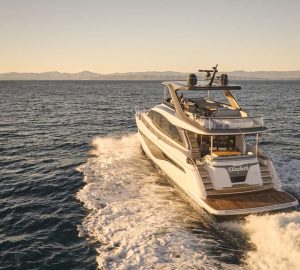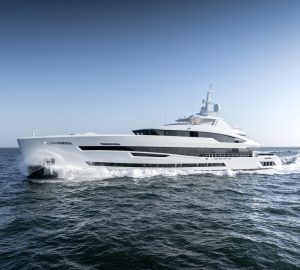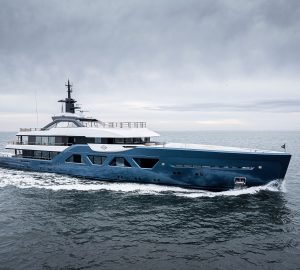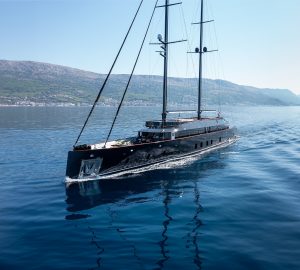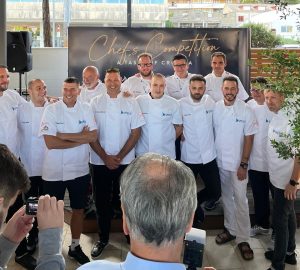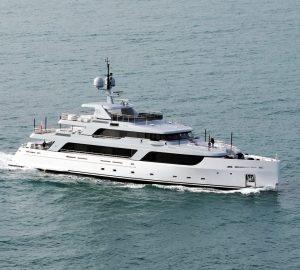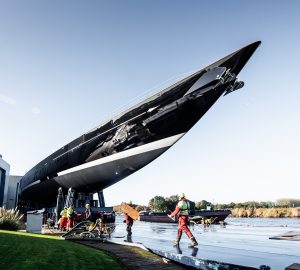Newport, R.I. USA (July 1, 2011) – Carina, skippered by Rives Potts Jr. (Essex, Conn.), has put on a stellar performance over the last six days since starting the Transatlantic Race 2011 on June 26. This morning, Carina had pulled out a lead of 33 miles over British Soldier crewed by the British Army Sailing Association.
The statistics, however, do not reflect that British Soldier is making a move north, presumably to get the last favourable effect from land as she heads for the coast of Newfoundland and the notorious Grand Banks. These underwater plateaus, southeast of Newfoundland, are relatively shallow, ranging from 80 to 330 feet in depth. The cold Labrador Current mixes with the warm waters of the Gulf Stream here and the results can be a significant increase in both wave height and wind strength. By contrast, the 86’ yawl, Nordwind, owned by Hans Albrecht (Munich, Germany) is pushing on in a more southerly position and is only about four miles behind Carina. Weather data suggests that Nordwind is in significantly more breeze than their rivals, however, the Azores High Pressure system lies ahead and this additional wind should peter out, necessitating a move north.
After six days at sea, the racing yachts will be settling into a rhythm. Life onboard is drastically different from land; the boat becomes the world in which the crew live and everyday issues that are taken for granted become of vital importance at sea. For the crew, water is a scarce commodity and there is no convenience store to run out to. Supplies of fresh food will be running low and rations preserved in tin or freeze-dried dinners will shortly become the norm. So why put yourself through these hardships? The fact of the matter is that these men and women are experiencing an astonishing adventure. The wonder of wildlife, such as whales and dolphins, are a regular topic of conversation in the boat blogs and this rare environment provides some of nature’s most spectacular phenomenons, as William Hubbard (New York, USA) explained by satellite from Dawn Star.
“We’ve finally gotten some really great weather. We escaped the fog in the late afternoon, picked up some stable wind from the port quarter and have been spinnaker reaching ever since. Last night the sunset was magnificent, and everyone saw the green flash, most for the first time. Spectacular! We’ve had the same great breeze all night and as morning comes, we’re running downhill with the big kite, surfing down some moderate sized waves and really enjoying the sail.”
As any offshore sailor will agree, reaching along out in the ocean, at sunset, with a spinnaker up is a magical experience. The corkscrew motion of the boat, as it surges forward from one wave to the next becomes your rhythm.
However, coming up behind are the leaders of fleet who departed in the second start (June 29), and they will be playing a different rhythm all together, sounding more like the boom of war drums. These high-performance, racing machines, crewed by professional sailors are rapidly closing the gap on the first starters.
Zaraffa owned by Sheldon Huntington (Shelburne, Vt.) is just 120 miles behind the first starting pack — making up over 200 miles on them in less than two days and is looking like the boat to beat in IRC Class Three. Last night, the crew work onboard the Zaraffa would have been frenetic, as the yacht put in gybe after gybe to work the shifts off the coastline of Nova Scotia. Scho-ka-kola put in similar hard work and Uwe Lebens (Hamburg, Germany) and his crew can see the rewards, moving up to second overall in class. The Lithuanian Volvo 60, Ambersail, skippered by Simonas Steponavicius (Vilnius, Lithuania) has moved up to third in class
Chris Bull’s Jazz, skippered by Nigel King (Lymington, U.K.) deserves an apology. At the start they were called back as they were over the line, which was correctly reported but they were the first yacht to return to restart, not the last as was previously reported. Since then Jazz has been flying along, opening up a lead of over 25 miles on the two German Rogers 46s, Varuna and Shakti. However, Jazz will be concerned about the two rivals, as they have made a bold move towards the coast of Nova Scotia. There is a marked difference in water temperature to land temperature at this juncture, hot air rising over the land can literally suck in cold air from the sea and pump it up producing a thermal breeze. Jazz, on the other hand, is 50 miles offshore, a more direct route but that degree of separation from the competition is always a worry.
Concise 2 and Dragon, respectively are having a great battle in the Class 40 division. The youth team on Concise 2, skippered by Ned Collier-Wakefield (Oxford, U.K.), leads by 10 miles, but is not shaking off the attentions of Dragon which is being sailed double-handed by Michael Hennessy (Mystic, Conn) and Rob Windsor (East Northport, N.Y.) who are delighted with their performance so far, as they reported in their blog.
“We are feeling pretty good. Prodigy and Ourson are both in sight and Concise is right around the corner. We have been pleasantly surprised by the conditions over the first 30 hours…. better than we had hoped for.”
In the Open Class, the ‘sports car’ is ahead of the ‘limousine’. Phaedo, owned by Lloyd Thornburg (St. Barthelemy), is 25 miles ahead of the 298’ sailing yacht Maltese Falcon. With only a slight sea state and broad reaching conditions, Phaedo, at a fraction of the weight of their mammoth adversary is enjoying the advantage. However, should the wind increase and go forward of the beam, Maltese Falcon would wipe out that lead in just a few hours.
Yesterday, the crew aboard Dawn Star was wonder-struck by the green flash. By tonight they may well be astonished to see the man-made phenomenon of superyacht Maltese Falcon, looming over the horizon.

